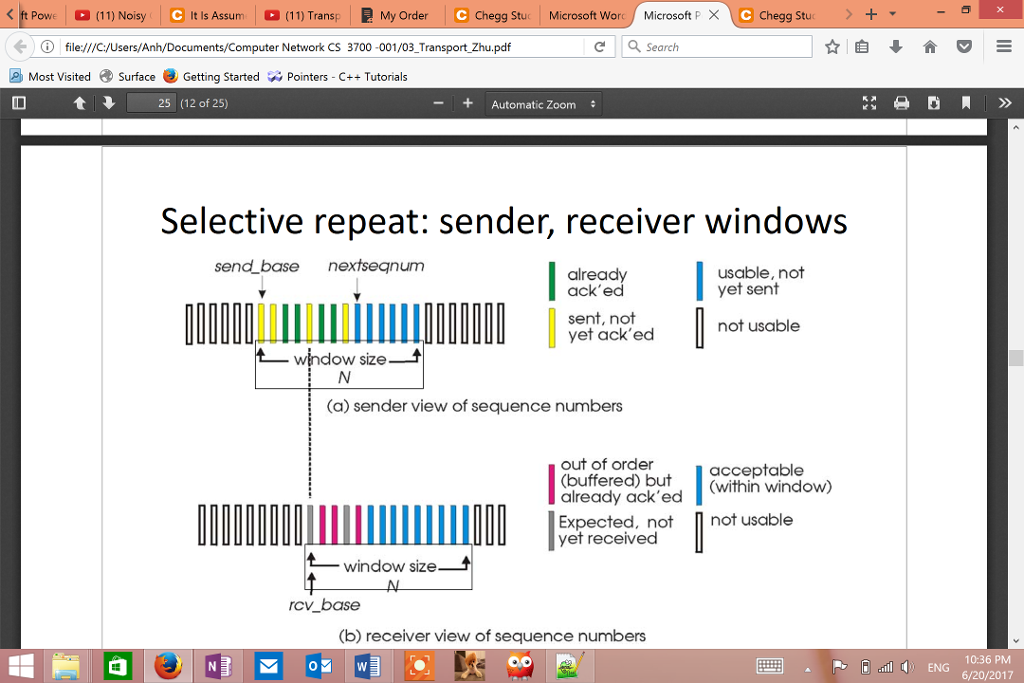Question
Please help me to draw and answer question b and c . It is assumed that It is assumed that there are at least 40
Please help me to draw and answer question b and c .
It is assumed that It is assumed that there are at least 40 packets buffered in the queue to be sent out by the sender, the network is stable (i.e., the propagation time between the sender and the server is roughly the same for every data packet and ack if it is not lost), the total transmission delay of 3 data packets are much smaller than RTT, 8-bit sequence numbers are used, window size N = 3, and initial send_base = 15.
a, Draw a diagram similar to PPT slide 25 titled Selective repeat in action of Chapter 3 for the Selective-Repeat approach to illustrate the interaction between the sender and the receiver between the moment when pkt15 is sent the first time by the sender and the moment when pkt 23 is sent out the first time by the sender. During the interaction, only four abnormal events occur: pkt16 is lost on the way when it is sent to the receiver the FIRST time, the timer for pkt16 expires a little while after ack#17 is received by the sender the FIRST time, ack18 is lost on the way when it is sent to the sender the FIRST time, and the timer for pkt18 expires right after the pkt(s) with newly available sequence number(s) are sent out due to the event of receiving ack#16 by the sender the FIRST time. Please include all the details as given in PPT slide 25 in your diagram.
b, Draw the Sender Window similar to the sender view given in PPT slide 23 titled Selective repeat: sender, receiver windows for the moment right after ack17 is received the first time and before the timer for pkt16 expires on the senders side in the scenario described in (a). The same COLOR code must be used. You only need to place four bars before and after the Window. What are the values of send_base, nextseqnum, and N in this particular case?
c, Draw the Receiver Window similar to the receiver view given in PPT slide 23 titled Selective repeat: sender, receiver windows for the moment right after ack17 is sent the first time on the receivers side in the scenario described in (a). The same COLOR code must be used. You only need to place four bars before and after the Window. What are the values of rcv_base and N in this particular case?

Step by Step Solution
There are 3 Steps involved in it
Step: 1

Get Instant Access to Expert-Tailored Solutions
See step-by-step solutions with expert insights and AI powered tools for academic success
Step: 2

Step: 3

Ace Your Homework with AI
Get the answers you need in no time with our AI-driven, step-by-step assistance
Get Started


